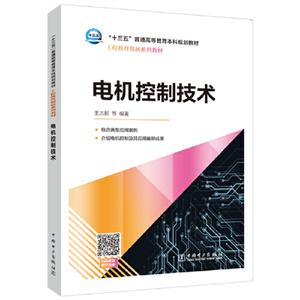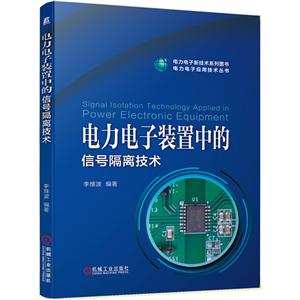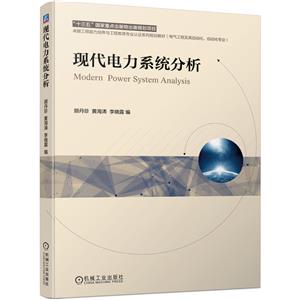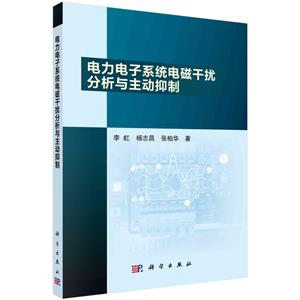
作者:赵争鸣、袁立强、白华、鲁挺
页数:469
出版社:清华大学出版社
出版日期:2018
ISBN:9787302537731
电子书格式:pdf/epub/txt
内容简介
本书系统论述了电力电子系统瞬态过程理论和应用,内容包括:梳理和认识电力电子系统的结构和属性;电力电子系统中电磁瞬态过程及其建模;功率开关器件瞬态特性、瞬态换流拓扑及其杂散参数和基于器件特性的系统安全工作区;电磁瞬态过程的量测、主电路电磁脉冲及其序列和高性能闭环控制及其;瞬态电磁能量平衡控制策略基本原理与控制方法;电磁瞬态分析在典型电力电子系统中的应用。
本书可供从事电力电子领域工作,特别是从事大容量电力电子系统研究、装置开发和工程应用的专业人士参考,也可供高校相关专业教师和研究生参考。
作者简介
赵争鸣,主要从事电力电子与电力传动、电机系统及其控制、大容量高压变频器与太阳能光伏发电等研究工作。先后在国际学术刊物、国际会议以及国内核心刊物上发表120多篇有关学术论文,其中,其中SCI收录10篇,EI源刊58篇,ISTP10篇。参与编著《中国电力大百科全书》。98年获教育部科技进步奖三等(第一完成人),2000年获中国高校科技奖一等(第一完成人)先后获六项国家专利(第一发明人)。
本书特色
本书系统论述了电力电子系统瞬态过程理论和应用,内容包括:梳理和认识电力电子系统的结构和属性;电力电子系统中电磁瞬态过程及其建模;功率开关器件瞬态特性、瞬态换流拓扑及其杂散参数和基于器件特性的系统安全工作区;电磁瞬态过程的量测、主电路电磁脉冲及其序列和高性能闭环控制及其限制;瞬态电磁能量平衡控制策略基本原理与控制方法;电磁瞬态分析在典型电力电子系统中的应用。
本书可供从事电力电子领域工作,特别是从事大容量电力电子系统研究、装置开发和工程应用的专业人士参考,也可供高校相关专业教师和研究生参考。
目录
1 Introduction
1.1 Decomposition of Power Electronics Systems
1.1.1 Power Semiconductor Devices
1.1.2 Power Conversion Circuit
1.1.3 Pulse Control
1.2 Synthesis of Power Electronics Systems
1.2.1 Integration of Software and Hardware
1.2.2 Interaction Between Information and Energy
1.2.3 Transfer Between Linearity and Non-linearity
1.2.4 Mixture of Continuity and Discreteness
1.2.5 Coordination of Multi-timescale Subsystems
1.3 Applications of Power Electronics Systems
1.3.1 Flexible AC or DC Current Transmission
1.3.2 Power Electronic Systems in Grid-Tied Renewable Energy Generation
1.3.3 Traction System
1.4 Existing Challenges in Power Electronics Systems
1.4.1 Misunderstanding the Short-Timescale Switching Process of Power Switches
1.4.2 Idealization of Power-Conversion Topology for Transient Study
1.4.3 Unrecognizing the Difference Between Information Pulses and Energy Pulses
1.4.4 Misidentifying Electromagnetic Transients
2 Electromagnetic Transients and Modelliing
2.1 Electromagnetic Transients of Power Electronics Systems
2.1.1 Electromagnetic Transients in the Main-Power Loop
2.1.2 Electromagnetic Transients in the Gate-Drive Loop
2.1.3 Electromagnetic Transients in the Control Loop
2.2 Mathematical Models of Electromagnetic Transients
2.2.1 Modelling Electromagnetic Transients
2.2.2 Transient Model of the Main-Power Loop
2.2.3 Transient Models of Electric Components
2.2.4 Transients Model of Gate-Drive and Control Circuits
2.3 Timescale Difference and Impact
2.3.1 Comparison of Different Time-Scale Transients
2.3.2 Correlations Among Different Time-Constant Loops
2.3.3 Impact of the Time-Constant Difference
2.3.4 Loop-Parameter Matching for Energy Balancing
2.4 Electromagnetic Pulses and Pulse Sequences
2.4.1 Mathematical Expression of the Electromagnetic Pulses and Pulse Sequences
2.4.2 Propagation and Deformation of the Pulse and Pulse Sequence
2.4.3 Time and Logic Combination of Pulse Sequence
……
3 Transient Characteristics of Power Switches
4 Transient Commutation Topology and Its Stray Parameters
5 System Safe Operation Area Based on Switching Characteristics
6 Measurement and Observation of Electromagnetic Transients
7 Electromagnetic Pulses and Sequences in Main Circuit
8 High-Performance Closed-Loop Control and Its Constraints
9 Balance of Electromagnetic Energy in Transients
10 Applications of Transient Analysis in Power Converters
References















